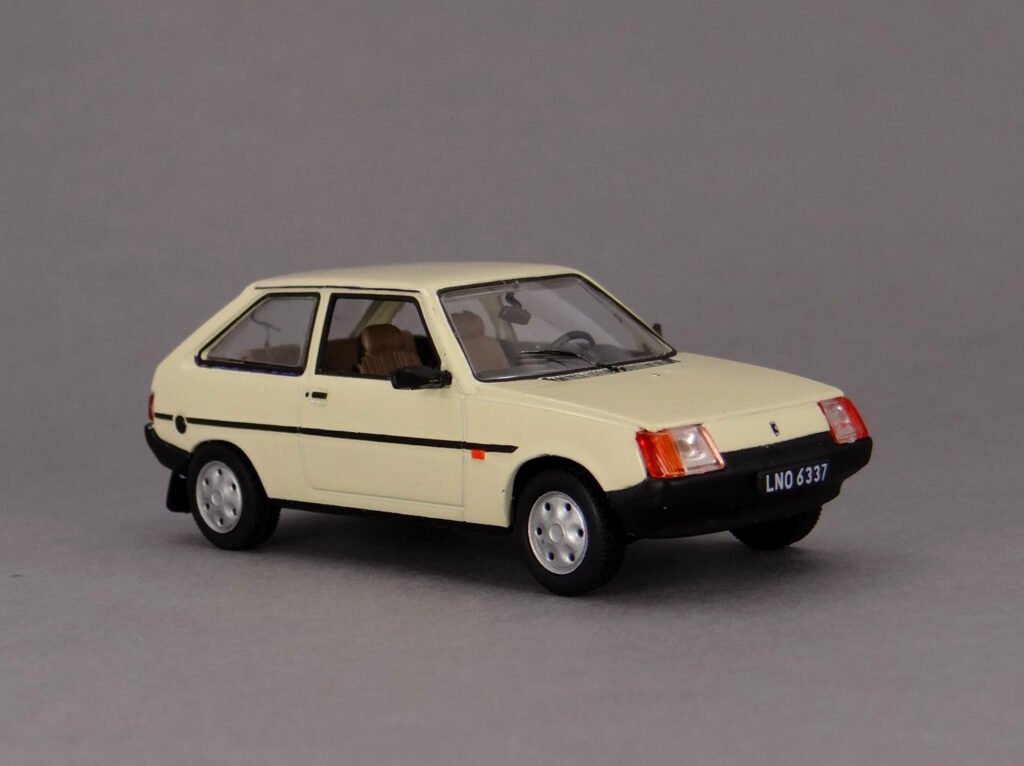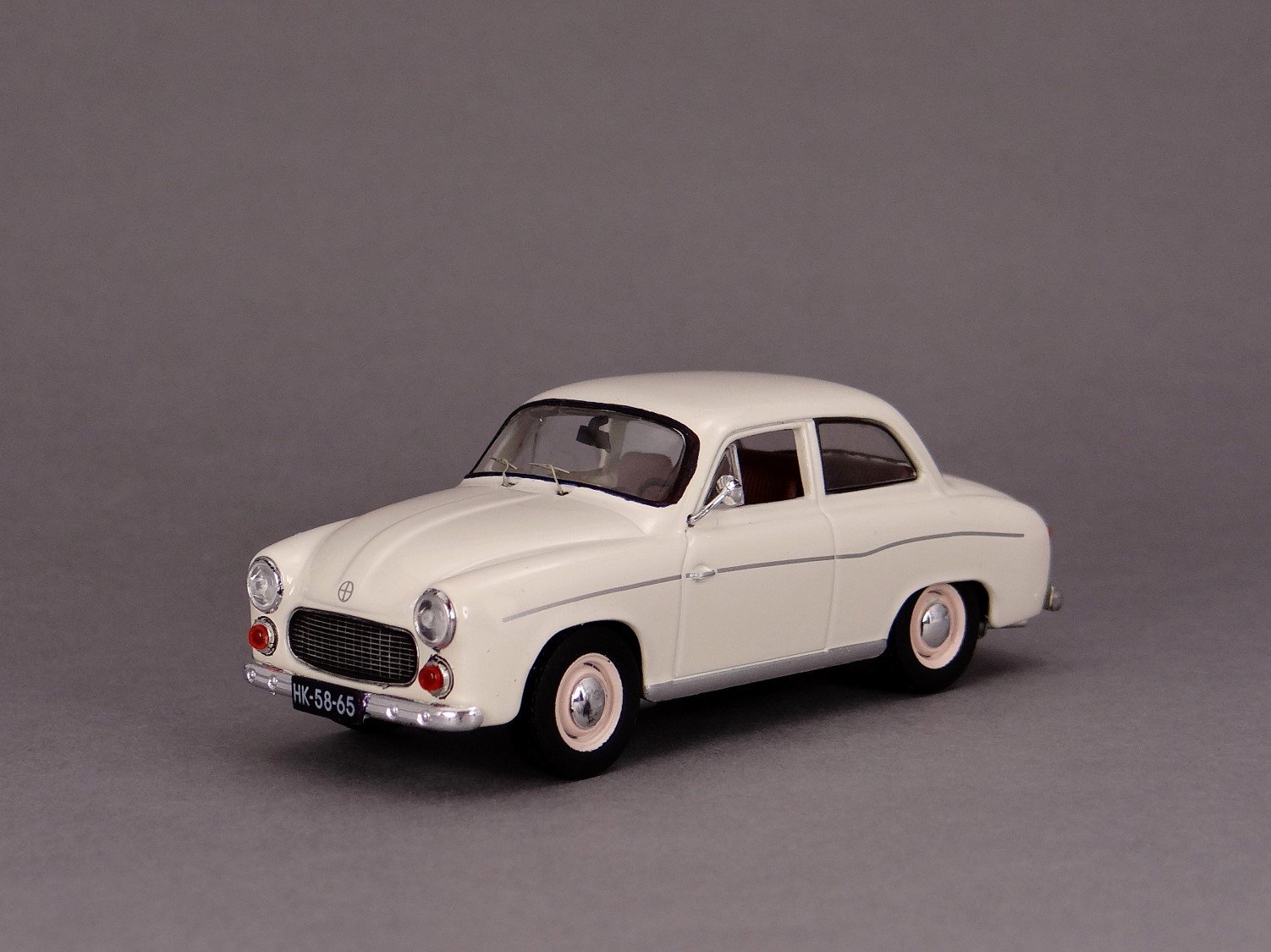Radziecka próba odpowiedzi na Forda Fiestę – de facto tym był ZAZ Tavria. Niestety, nie miał zbyt wiele szczęścia. Najpierw, ze względów politycznych, gotowy projekt przeleżał na półce 10 lat. Potem, tanie materiały i fatalna jakość montażu pogrzebały reputację modelu. Tavria błyskawicznie zdobyła status grata.

Zaporoska Fabryka Samochodów ZAZ (po ukraińsku Запорізький автомобілебудівний завод, Zaporiźkyj awtomobilnyj zawod) rozpoczęła produkcję małych, tylnonapędowych samochodów z silnikiem z tyłu, potocznie zwanych Zaporożcami, w 1959 roku. Jednak już na przełomie lat 60. i 70. grupa pod przewodnictwem inżyniera Władimira Szewczenko zaczęła prace nad nowoczesnym, przednionapędowym samochodem z silnikiem umieszczonym z przodu. Prace prowadzono niejako “po godzinach”, co oznaczało znikome fundusze i powolne tempo. W 1973 roku udało się jednak zdobyć oficjalną zgodę rządu na rozwój nowego modelu. Oznaczało to większy budżet i wsparcie AwtoWAZ, głównego producenta samochodów w Związku Radzieckim.
Korzystając ze wsparcia, ZAZ wykonał wiele prototypów w rozmaitych wersjach nadwozia. Prace były już w zaawansowanym stadium, gdy w 1976 roku Ford wypuścił pierwszą Fiestę. Zrobiła ona tak ogromne wrażenie, że ówczesny minister przemysłu motoryzacyjnego ZSRR nakazał przeprojektowanie wszystkich prototypów, tak aby nowe auto było konkurencyjne do zachodnich rywali. Nowe prototypy bardzo przypominające ostateczny projekt ukończono w 1978 roku a rozpoczęcie produkcji możliwe było już w 1981 roku. Niestety dla Tavrii, wtedy to polityka odegrała kluczową rolę.
Na początku lat 80. radziecki przemysł motoryacyjny szykował się do wprowadzenia Łady Samary, co okazało się priorytetem. Wynikało to w dużej mierze z faktu, że wiele decyzyjnych osób w ministerstwie transportu pracowało wcześniej w zakładach AwtoWAZ. Nie mogli oni pozwolić aby ukraińska fabryka produkowała pierwszy przednionapędowy samochód w Związku Radzieckim. Tego zaszczytu musiał dostąpić zakład-matka AwtoWAZ w Togliatti. Tym sposobem, finansowanie projektu Tavrii znacznie obcięto a plany rozpoczęcia produkcji odsunięto w czasie.
Pierwsza Tavria zjechała z linii montażowej dopiero w listopadzie 1987 roku. Z początkowych ambicji niewiele zostało. Tavria miała być teraz po prostu tania. Faktycznie taka była. Należała do najtańszych nowych samochodów w Związku Radzieckim. Niestety, niska cena odpowiadała jakości. Do budowy używano tanich materiałów a montaż był niechlujny. Skutkowało to tym, że nawet nowe modele często były krzywe i nierówno spasowane a usterki były wszechobecne. Pomimo wielu wad, samochód eksportowano na wiele rynków. Nie tylko do Polski, ale też np. do krajów Ameryki Południowej.

Główne źródło napędu stanowiły czterocylindrowe, chłodzone wodą siliniki ukraińskiej konstruckji, wytwarzane przez Melitopolską Fabrykę Silników (MeMZ). Dostępne były odmiany 1.1, 1.2 i 1.3 (późna wersja z wtryskiem paliwa zamiast gaźnika). Tavrię oferowano też z fiatowskim silnikiem 0.9 oraz jednostką 1.3 AwtoWAZ z Łady Samary.
Podstawową i najpopularniejszą wersją nadwozia był trzydrzwiowy hatchback (oznaczenie 1102). Na jego bazie powstała jednak cała gama wersji nadwoziowych. Był liftback (1103 Slavuta), kombi (1105 Dana), pick-up (11055 Tavria Pick-up) i furgon (11026 Universal). Warto odnotować, że produkowano też specjalne odmiany dla osób niepełnosprawnych, różniące się wyposażeniem w zależności od rodzaju niepełnosprawności.
Tavrię na przestrzeni lat sukcesywnie modernizowano, choć zmiany były z reguły symboliczne. Produkcję odmiany hatchback ostatecznie zakończono w 2007 roku.
O miniaturze – ZAZ Tavria
Prezentowany ZAZ Tavria ukazał się w 2010 roku jako 55. numer serii „Kultowe Auta PRL-u”. Choć swego czasu modelik rozpoczął dyskusję czy jest kultowy i czy pasuje do kolekcji „PRL”, to uważam, że jego obecność w niej jest uzasadniona. Na pewno zdecydowanie bardziej pasuje do tematyki serii niż kilka innych wątpliwych modeli, które się w niej ukazały (tak, patrzę na Ciebie IŻu 2126).
Sam modelik był jednym z lepszych z serii. Jest wolny od większych wad merytorycznych, co niestety nie było takie oczywiste w KAPie. Brakuje w nim trochę detali, na szczęście dość łatwo można temy zaradzić, co też uczyniłem. Poprawiłem malowanie uszczelek, wlotu powietrza na masce, zabarwiłem tylne lampy i dodałem fototrawione wycieraczki. Pomalowałem też wnętrze. Zmiany nie są może spektakularne, ale sądzę że poprawiają wygląd modelu. Dołączyłem dużo zdjęć, jak również ujęć przed i po, więc możecie ocenić sami.
Jak zwykle, zapraszam na social media: Instagram i Facebook.
*** ENGLISH ***
A Soviet attempt at answering the Ford Fiesta – that’s what the ZAZ Tavria basically was. Unfortunately, it didn’t have much luck. First, due to political reasons, a ready design sat on the shelf for 10 years. Then, cheap materials and dreadful build quality quickly buried the car’s reputation. The Tavria almost instantly reached banger status.

The Zaporizhzhia Automobile Factory (in Ukrainian Запорізький автомобілебудівний завод, Zaporiz’kyi avtozavod) started producing small, rear-engined, rear-wheel drive cars, commonly called the Zaporozhets, in 1959. However, in the late 60s and early 70s a group lead by the chief designer Vladimir Shevchenko began working on a modern, front-engine, front-wheel drive car. The work was essentially done “after hours”, which meant minimal funds and a slow pace. However, in 1973 the government officially allowed the development work. This meant a bigger budget and the support of AvtoVAZ, the biggest car manufacturer in Soviet Union.
Using the support, ZAZ made many prototypes in various body-styles. The development was already well underway, when in 1976 Ford released the first Fiesta. It made such a big impression, that the Soviet minister of car industry at the time ordered all prototypes to be redesigned, so that the new car could be competitive against Western rivals. The new prototypes which were very close to the final design were finished by 1978, with the production ready to be started as soon as 1981. Unfortunately for the Tavria, that’s when politics took centre stage.
At the beginning of the 80s the Soviet car industry was getting ready for the introduction of the Lada Samara, which was given priority treatment. This was mainly because many of the decision-makers at the Ministry of Transport of the USSR, worked at the AvtoVAZ before. They couldn’t allow a Ukrainian factory to produce the first front-wheel drive car in the Soviet Union. This honour had to be given to the AvtoVAZ mother-plant in Togliatti. That way, the financing for the Tavria project was significantly cut and the production start date was postponed.
The first Tavria rolled off the assembly line only in November 1987. At that point not much was left of the original ambitions. The Tavria was only meant to be cheap now, and that it really was. It was among the cheapest new cars in the Soviet Union. Unfortunately, the low price matched the quality. Cheap materials were used in production and the assembly was slap-dash. Because of that, even the brand new models often had uneven body panels and faults were plentiful. Despite its manly flaws, the car was exported to many markets, including Poland and South American countries.

The main source of power came from four-cylinder, water-cooled, Ukranian-designed engines, produced by the Melitopol Motor Plant (MeMZ). A 1.1, 1.2 and 1.3 (a late version with fuel injection instead of a carburettor) were offered. The Tavria was also available with a 0.9 Fiat engine and a 1.3 AvtoVAZ engine from Lada Samara.
The standard and thus most popular body style was the three-door hatchback (codename 1102). Based off it however, was a whole range of body styles. There was a liftback (1103 Slavuta), an estate (1105 Dana) a pick-up (11055 Tavria Pick-up) as well as a van (11026 Universal). It’s worth mentioning, that there were also unique versions made for the disabled, differing in equipment depending on the type of disability.
The Tavria was gradually updated through the years, although the changes were usually minimal. The production of the hatchback finally ended in 2007.
About the miniature – ZAZ Tavria
The showcased ZAZ Tavria was released in 2010 as no.55 of the “Kultowe Auta PRL-u” (Cult cars of the People’s Republic of Poland”) partwork series. Although at the time the model sparked a discussion whether or not it’s cult and if it fits the “communist Poland” collection, I think that its presence is justified. It cetainly fits the series’ theme a lot more than a few other questionable models that appeared in it (yes, I’m looking at you Izh 2126).
The diecast model itself is one of the better ones in the series. It is free of any major faults in shape, which unfortunately wasn’t all that obvious in the KAP series. It is missing some detail, thankfully these are quite easy to fix, which is what I did. I redid the black rubber trims, painted the air vent on the bonnet, coloured the rear lights and added photoetched wipers. I also painted the interior. The changes are perhaps not spectacular, but I do think they improve the model’s looks. I attached plenty of photos as well as before and after shots. So you can judge for yourself!
As always, I invite you to the social media: Instagram and Facebook! From time to time they have additional stuff there that don’t always make it to the website, so be sure to check them out!



















